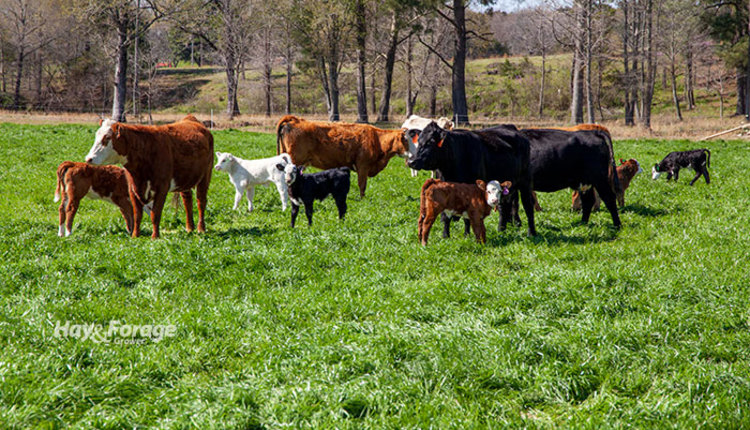
Despite the convenience of a drive-through burger, fast food products usually lack essential nutrients. Although not found on the menu of any chain restaurants, the same can be said for fast-growing forages that don’t offer livestock enough magnesium in the spring.
Adele Harty with South Dakota State University says grass tetany is a metabolic disorder that results from low concentrations of magnesium in an animal’s blood. This can occur if livestock graze a large quantity of cool-season grasses that green up too quickly when the weather gets warm.
Cattle may be at even greater risk of grass tetany if they consume forage with high levels of potassium and/or crude protein. Adverse weather can also worsen magnesium deficiencies if a herd isn’t able to graze for an extended period. Harty notes an animal’s age and stage of production can influence their susceptibility to grass tetany as well.
“Mature cows are less able to mobilize magnesium from their bones to maintain blood magnesium levels,” the extension cow-calf specialist explains. “Additionally, cows within two months of calving have higher requirements for calcium and magnesium due to lactation.”
While signs of grass tetany don’t normally occur until May, Harty advises producers to be proactive in planning for the disorder. Proper supplementation and grazing management can help minimize its threat.
Supplement feed
Start incorporating magnesium into feed two to three weeks before turning livestock out to graze. Harty recommends using supplements that contain 8% to 12% magnesium at 3 to 4 ounces daily intake. Cooked molasses products can also be fed.
“For a cooked molasses product with a recommended intake of approximately 1 pound per day, the guaranteed analysis for magnesium should be approximately 4%,” Harty states. “Read the label to ensure adequate magnesium levels; know recommended intake and monitor consumption.”
Once a herd is on pasture, provide dry hay to offer additional magnesium and calcium. Grazing animals may not eat hay unless they are forced to, though. Therefore, adding salts such as magnesium acetate, magnesium chloride, and magnesium sulfate to water tanks is another option for supplementation.
Long-term grass tetany prevention includes incorporating more legumes into a forage system. Harty says legumes have higher levels of magnesium and calcium than immature grasses and can balance animals’ nutrient uptake, especially in the spring.
Spot the symptoms
Symptoms of grass tetany can progress in as little as four to eight hours. Animals may start grazing away from the herd, display irritability, and experience muscle twitching in the flank. These symptoms can lead to muscular incoordination, staggering, collapse, thrashing, coma, and eventually death.
“Affected animals should be handled calmly because stress can cause sudden death,” Harty asserts. “Treatment options are available, but effectiveness depends on the clinical stage when it is administered.”
Harty says an intravenous dextrose-based commercial preparation of magnesium and calcium can be purchased from a local veterinarian. This type of product is most effective if given to animals within one to two hours after clinical signs of the disorder develop. Treatment will not be successful if delayed until later stages of grass tetany symptoms.

Amber Friedrichsen served as the 2021 Hay & Forage Grower editorial intern. She currently attends Iowa State University where she is majoring in agriculture and life sciences education-communications and agronomy. Friedrichsen grew up on her family’s diversified crop and livestock farm near Clinton, Iowa.

